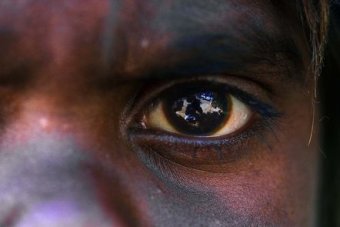More than 32,000 Indigenous Australians are likely to be blind by 2025 because of treatable eye conditions.
A report from the University of Melbourne said the eyesight of those people could be saved if the Federal Government invested an extra $23 million a year.
The study’s lead author, Professor Hugh Taylor, said evidence suggested Indigenous Australians were not getting the care they needed to see clearly.
“Aboriginal and Torres Strait Islander children start off with much better vision than non-Indigenous children,” he said.
“By the time they reach the age of 40 and above the average Torres Strait Islander adult has six times as much blindness and over three times as much poor vision.”
The report found Australia could save money in the long term if the Federal Government boosted spending on preventing vision loss among Indigenous people.
The university commissioned PricewaterhouseCoopers (PwC) to analyse the Government’s annual $40 million spend on Indigenous eye health.
PwC partner James van Smeerdijk said to eliminate preventable blindness in Indigenous communities, the Government would need to spend an extra $23 million a year for the next 10 years.
“If we can return sight to 32,000 people, that will help a lot of people into the workforce,” he said.
“The additional $23 million a year, or $227 million for 10 years, is only about half a per cent of the health budget.
“I think it’s a pretty modest investment.”
‘Pathway of care like a leaky pipe’
Vision degeneration, cataracts and eyesight problems caused by diabetes are the common causes of blindness in Indigenous communities.
The bacterial eye infection trachoma still spreads in many remote communities, caused by poor hygiene.
In the Northern Territory, the Jimmy Little Foundation was having some success rolling out songs and video about trachoma awareness, but the Federal Government cut all of its funding this year.
The foundation’s chief executive, Buzz Bidstrup, said the funding cuts had eliminated important programs.
“Some really, really important frontline programs and delivery mechanisms are being bypassed for funds that are directed into another bucket, which then become savings,” he said.
Professor Taylor said he was worried that the systems in place would not provide adequate care.
“We’ve looked in detail at the patient’s journey, or the pathway of care, and we’ve said it’s like a leaky pipe,” he said.
“There are lots of cracks where people can just fall through the system.
“So if somebody is referred to get further treatment or a pair of glasses, they actually get it rather than just having the money spent on a wasted visit.”
The university’s Indigenous Eye Health Unit has presented its report to the Department of Health in Canberra.

